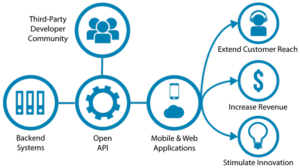Saving for retirement might seem daunting for millennials, especially with rising living costs and student loan burdens. But don’t let that discourage you! Here are 4 practical ways millennials can start building a bright financial future that 4 ways millennials can save for retirement
>> Unlock passive income Start earning today <<

1. Start early, even with small amounts: The power of compound interest is your friend. The earlier you start saving, even small contributions can grow significantly over time. Aim for even $50 per month – every bit counts!
2. Utilize employer-sponsored retirement accounts: Most employers offer 401(k) plans with matching contributions. This is free money! Don’t miss out. If available, try to max out your employer match annually.


3. Leverage Individual Retirement Accounts (IRAs): If you don’t have access to a 401(k), or even as a supplement, consider opening an IRA. Traditional IRAs offer tax deductions on contributions, while Roth IRAs offer tax-free growth and withdrawals in retirement. Choose the option that best aligns with your long-term goals.
4. Automate your savings: Set up automatic transfers from your checking account to your retirement accounts. This makes saving effortless and ensures you stay on track without relying on willpower.

Start early, even with small amounts
Starting early, even with small amounts, is a great way to build a foundation for future success. Whether you’re thinking about saving money, investing, learning a new skill, or pursuing a goal, here are some general tips to help you get started for 4 ways millennials can save for retirement:
>> Unlock passive income Start earning today <<
1. Set Clear Goals:
- Define your short-term and long-term goals. This could be saving for a specific purchase, investing for retirement, learning a new language, or any other personal or professional goal.
2. Create a Budget:
- Understand your income and expenses. Creating a budget allows you to identify areas where you can save money, even if it’s a small amount.
3. Start Small:
- Don’t be discouraged by small beginnings. Start with what you can comfortably manage, and gradually increase your efforts as your confidence and resources grow.
4. Automate Savings:
- Set up automatic transfers to your savings or investment accounts. This ensures that a portion of your income is saved before you have the chance to spend it.
5. Educate Yourself:
- Learn about the subject you’re interested in, whether it’s personal finance, investing, or a skill you want to develop. The more knowledge you have, the better decisions you can make.
6. Take Advantage of Compound Interest:
- If you’re investing, the earlier you start, the more time your money has to grow through compound interest. Even small, consistent contributions can lead to significant returns over time.
7. Prioritize:
- Identify your priorities and focus on what matters most to you. This might mean cutting unnecessary expenses or dedicating time each day to work on your goals.
8. Build Good Habits:
- Consistency is key. Building good habits, whether it’s saving a small amount regularly, practicing a skill daily, or studying regularly, can lead to long-term success.
9. Track Your Progress:
- Regularly review your goals and track your progress. Celebrate small achievements along the way to stay motivated.
10. Seek Guidance:
- If you’re new to a particular area, seek advice from experts or mentors. Learning from others’ experiences can help you avoid common pitfalls and accelerate your progress.
11. Embrace a Growth Mindset:
- View challenges as opportunities to learn and grow. A positive mindset can help you overcome obstacles and stay motivated.
Remember, the key is to start and be consistent. Small, incremental steps can lead to significant progress over time. Whether it’s saving money, investing, learning, or pursuing goals, the early start is often the most crucial factor.
Utilize employer-sponsored retirement accounts
Employer-sponsored retirement accounts are a fantastic way to jumpstart your savings for retirement and take advantage of some valuable tax benefits. These accounts come in different flavors, but the most common ones are 401(k)s, 403(b)s, and 457(b)s. They all share some key features and 4 ways millennials can save for retirement:
>> Unlock passive income Start earning today <<

1. Tax Advantages: Contributions you make to these accounts are typically deducted from your paycheck before taxes, lowering your taxable income for the year. This means you pay less in taxes now, and your money grows tax-deferred until you withdraw it in retirement. In some cases, you may even be able to contribute to a Roth version of these accounts, where your contributions are taxed upfront, but your withdrawals in retirement are tax-free.
2. Employer Matching: Many employers offer matching contributions to your retirement savings. This is essentially free money! For example, your employer might match 50% of your contributions up to a certain percentage of your salary. So, if you contribute 5% of your salary, your employer would contribute another 2.5%, giving your retirement savings a nice boost.
3. Investment Options: Most employer-sponsored retirement accounts offer a variety of investment options, such as mutual funds, stocks, and bonds. This allows you to tailor your investments to your risk tolerance and retirement goals.
4. Automatic Contributions: Once you set up your contributions, they’re automatically deducted from your paycheck, making it easy to save consistently and reach your retirement goals.
Here are some specific steps you can take to utilize your employer-sponsored retirement account:
- Enroll in the plan: If your employer offers a retirement plan, be sure to enroll as soon as possible. Don’t miss out on free money from employer matching!
- Choose your contribution amount: Start by contributing at least enough to get your employer’s full match. Then, aim to increase your contributions gradually over time as your income grows.
- Allocate your investments: Choose investment options that are appropriate for your risk tolerance and retirement timeline. If you’re unsure where to start, talk to a financial advisor.
- Review your account regularly: It’s a good idea to review your retirement account balance and investment allocations at least once a year. This will help you stay on track and make adjustments as needed.
Utilizing your employer-sponsored retirement account is one of the best things you can do to secure your financial future. By taking advantage of the tax benefits, employer matching, and investment options, you can build a nest egg that will allow you to enjoy a comfortable retirement.
Leverage Individual Retirement Accounts (IRAs)
The term “leverage Individual Retirement Accounts (IRAs)” can have two different meanings, depending on the context 4 ways millennials can save for retirement :
1. Margin trading in an IRA: In this context, it refers to using borrowed money to purchase investments within your IRA. While theoretically possible with some specialized brokers, it’s generally not allowed and not recommended for several reasons:
>> Unlock passive income Start earning today <<
- IRS restrictions: The IRS prohibits using IRA assets as collateral for a loan. If you attempt margin trading and the IRS deems your IRA as collateral, the entire account could be considered distributed, triggering immediate taxes and penalties.
- Increased risk: Leverage amplifies both potential gains and losses. With volatile assets, small market movements can quickly wipe out your investment and leave you indebted.
- Tax implications: Even if successful, any earnings from leveraged investments in an IRA are still subject to ordinary income tax upon withdrawal.
2. Utilizing your IRA for borrowing: Some IRA custodians offer the option to take loans against your IRA balance. This allows you to access a portion of your retirement savings while it continues to grow tax-deferred. However, these loans come with several important considerations:
- Repayment requirements: You must repay the loan within a specific timeframe, typically within five years, with interest. Missed payments can have severe consequences, including early withdrawal penalties and tax implications.
- Potential tax impact: If you withdraw earnings from the IRA to repay the loan before retirement age, those earnings will be taxed as ordinary income.
- Reduced future retirement savings: Utilizing your IRA for a loan effectively reduces your total retirement savings, potentially impacting your long-term financial security.
Therefore, while leveraging your IRA through margin trading or borrowing is technically an option in some cases, it should be approached with extreme caution and only after careful consideration of the risks and potential consequences. Consulting a financial advisor specializing in retirement planning is highly recommended before venturing into such strategies.
It’s crucial to clearly understand your financial goals and risk tolerance before considering any leveraging techniques within your IRA. Remember, your retirement savings are vital for maintaining your financial security in later years, and any strategy that jeopardizes that should be approached with the utmost prudence.
I hope this clarifies the two potential meanings of “leverage Individual Retirement Accounts (IRAs).” Please let me know if you have any further questions or would like more specific information on the risks and rewards of either leveraging technique.
Automate your savings
There are many ways to automate your savings, making it easier than ever to save consistently and reach your financial goals. Here are some options to consider ways millennials can save for retirement:
>> Unlock passive income Start earning today <<
Using your bank’s features:
- Recurring transfers: Most banks offer the ability to schedule automatic transfers between your checking and savings accounts at regular intervals, like monthly or weekly. You can choose the amount and date, making it a set-and-forget system.
- Direct deposit split: If your employer offers direct deposit, you can choose to have a portion of your paycheck automatically deposited into your savings account. This ensures a part of your income goes directly towards savings before you ever see it in your checking account.
- Round-up apps: Some banks offer apps that round up your everyday purchases to the nearest dollar and transfer the difference to your savings account. These “micro-savings” can add up significantly over time.

Third-party apps and tools:
- Micro-investing platforms: Apps like Acorns and Stash allow you to invest your spare change automatically. Round-up purchases and small recurring deposits can be invested in various assets, depending on your risk tolerance and goals.
- Savings apps with automation features: Apps like Digit analyze your spending patterns and automatically transfer “safe-to-save” amounts into your savings account. This ensures you don’t overdraft your checking while still building your savings.
- Goal-based saving apps: Several apps help you set specific savings goals, like a vacation or down payment, and automatically calculate and schedule transfers to reach your target date.
Additional tips for automating your savings:
- Start small: You don’t need to drastically change your budget to start saving. Even automating a small amount, like $25 per week, can make a significant difference over time.
- Gradually increase: As your income grows or your budget allows, consider increasing your automated savings amount. You may not even notice the difference in your daily spending but will see a bigger impact on your savings.
- Track your progress: Regularly review your bank statements or app dashboards to see your savings grow. This helps you stay motivated and on track with your goals.
Remember, the key to successful automation is finding a system that works for you and your budget. Experiment with different options and strategies until you discover what sets you up for consistent and effortless savings.
I hope this gives you some ideas! Feel free to ask if you have any further questions or would like more specific

- Live below your means: Track your expenses and prioritize needs over wants. Avoid unnecessary debt and make conscious spending choices.
- Increase your financial literacy: Read books, attend workshops, or seek advice from financial professionals to understand different investment options and strategies.
- Revisit and adjust your plan: As your income and priorities change, adapt your savings goals and investment strategies accordingly.
Remember, building a secure retirement doesn’t happen overnight. Be patient, consistent, and adjust your approach as needed. With a little effort and smart planning, you can navigate the financial landscape and retire comfortably, regardless of your starting point.
>> Unlock passive income Start earning today <<
Happy saving!
Thank you for taking the time to read my rest of the article, 4 ways millennials can save for retirement

Can you be more specific about the content of your article? After reading it, I still have some doubts. Hope you can help me.